¿Qué baterías se utilizan en BESS??
When you explore the world of Battery Energy Storage Systems (BESS), a fundamental question comes to mind: what’s actually inside? What is the core battery technology that so effectively stores energy from your solar panels or the grid, ready to power your home or business when you need it most?
The vast majority of modern BESS installed today, from residential to massive utility-scale projects, usar Baterías de iones de litio. Específicamente, the preferred and dominant chemistry for stationary energy storage is LFP (Lithium Iron Phosphate or LiFePO₄). This technology is chosen for its superior combination of seguridad, very long lifespan, and excellent stability, making it the gold standard for reliable, rendimiento a largo plazo.
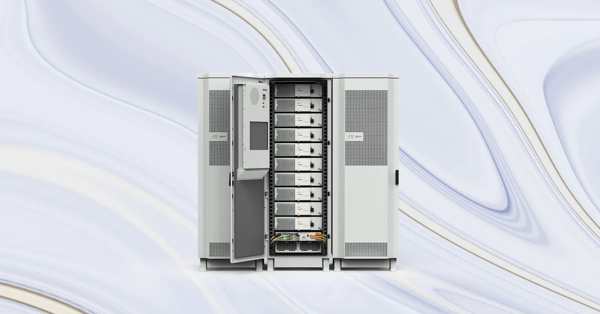
En Gycx Solar, our commitment to safety and long-term value for our clients is why we exclusively design our bess batteries solutions around LFP technology. It’s the proven, professional choice. Let’s explore more about these powerful systems.
¿Cuál es la vida útil de una batería de Bess??
A BESS is a significant, long-term investment in your property’s energy infrastructure. Entonces, a critical question is: how long will the battery component, the heart of the system, actually last?
The LFP (Fosfato de hierro de litio) battery within a modern BESS is designed for endurance, with an expected operational lifespan of 10 a 20 años. En términos de uso, Estas baterías están clasificadas para una impresionante 3,000 en exceso 6,000 Ciclos completos de carga de carga. To provide customers with confidence in this longevity, reputable manufacturers typically back their BESS products with a comprehensive 10-year warranty.
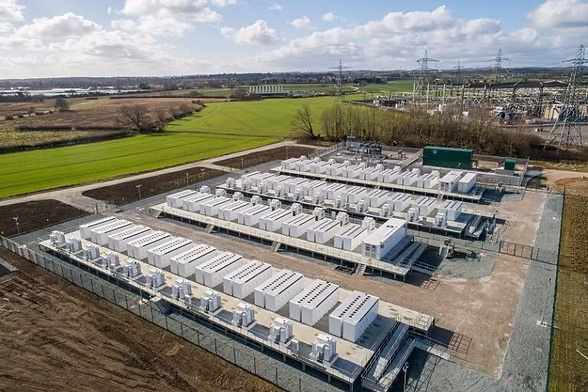
Sumergirse: The Makings of a Long-Lasting Battery
The impressive lifespan of a modern BESS battery is no accident; it’s the result of superior chemistry and intelligent system design:
- Química de LFP: LFP is inherently more stable and robust than other lithium-ion chemistries. It can withstand the stress of daily cycling (charging from solar during the day, discharging at night) for many years without significant degradation. Una batería clasificada para 6,000 Los ciclos en teoría podrían durar 16 años con un ciclo por día.
- BMS inteligente: El sistema de gestión de baterías integrado (BMS) acts as a guardian, constantly protecting the battery cells from stress by preventing overcharging, exceso de descarga, and ensuring all cells are balanced.
- Gestión térmica: The BESS is an engineered system with built-in thermal management. This is crucial in Singapore’s hot and humid climate. By keeping the battery cells within their optimal temperature range, the system prevents the accelerated aging that heat can cause, contribuyendo directamente a una vida más larga.
- La garantía: A 10-year warranty is the industry standard for quality residential BESS. Por lo general, garantiza que la batería retendrá una cierta cantidad de su capacidad original. (p.ej., 70%) by the end of the term, providing a clear benchmark for its long-term performance.
What are the three main types of BESS?
Is a BESS for a single home the same as one used to support an entire city’s power grid? De nada. BESS technology is incredibly scalable, and it’s typically categorized into three main types based on its application and size.
The three main types of BESS are:
- Residential BESS: Small-scale systems designed for individual homes.
- Comercial & Industrial (C&I) BESS: Medium-scale systems for businesses, factories, and other commercial properties.
- Utility-Scale BESS: Massive, grid-level systems owned and operated by power companies.
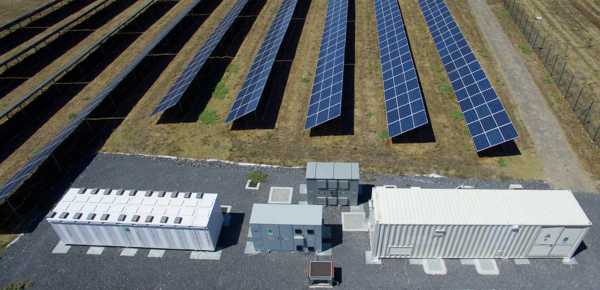
Sumergirse: From Your Home to the Grid
Let’s look at the purpose of each type:
- Residential BESS:
- Tamaño: Típicamente 5 kWh a 30 kWh.
- Objetivo: The main goals are to maximize solar self-consumption (storing daytime solar energy to use at night, which is great for managing high electricity tariffs in Singapore), provide backup power during grid outages, and increase energy independence.
- Factor de forma: Usually a sleek wall-mounted unit or a compact, stackable rack system.
- Comercial & Industrial (C&I) BESS:
- Tamaño: De 30 kWh to several megawatt-hours (MWH).
- Objetivo: Primarily used for "peak shaving" to reduce expensive demand charges, maximizing on-site solar usage, and providing backup power for critical operations.
- Factor de forma: Often larger indoor cabinets or outdoor-rated enclosures.
- Utility-Scale BESS:
- Tamaño: Muy grande, from dozens to thousands of MWh.
- Objetivo: To stabilize the entire power grid. They store massive amounts of energy from large-scale solar or wind farms, provide grid services like frequency regulation, and replace polluting "peaker" plantas de energía.
- Factor de forma: Typically consists of rows of large, shipping container-sized units.
En Solar Gycx, we specialize in designing and installing high-performance Residential and C&I BESS solutions tailored to the unique energy needs of our clients in Singapore.
Is BESS AC or DC?
When you get into the technical details of BESS, you’ll hear the terms AC (Alternating Current) y DC (Corriente continua). Is the BESS itself one or the other? The answer is both—it acts as a smart bridge between the two.
A BESS is fundamentally a DC device at its core, because batteries store and release DC power. Sin embargo, it uses a sophisticated inverter (the Power Conversion System, or PCS) to connect to our homes and the grid, which use AC power. How the BESS and its inverter are connected to a solar panel system determines whether it’s an "AC-coupled" or "DC-coupled" sistema.
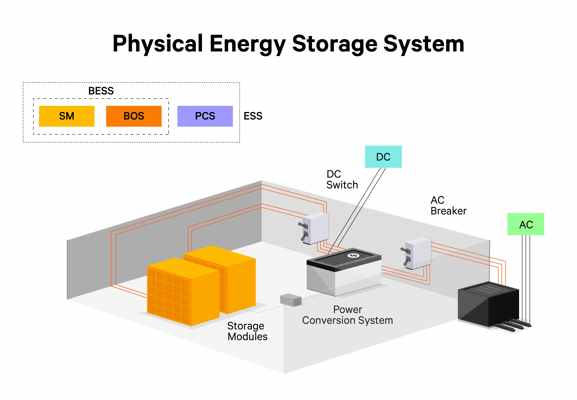
Sumergirse: AC acoplado vs. Sistemas acoplados a DC
Here’s a quick rundown of the two main architectures for solar + almacenamiento:
- Acoplado a DC: The solar panels (which produce DC power) and the batteries (which store DC power) are connected on the same side of a single inversor híbrido. This allows the DC power from the panels to charge the DC batteries directly and very efficiently. This is often the preferred method for new, integrated installations.
- AC-Coupled: The solar panels have their own solar inverter, and the battery system has a second, inversor de batería separado. Both connect to the AC panel of the house. Para cargar la batería de la energía solar, the AC power from the solar inverter is converted back to DC for the battery. This method is excellent for retrofitting a battery onto a home that already has a solar panel system.
Historia solar gycx: "When a client asks us this, we explain that the best choice depends on their situation. For a new landed property in Singapore getting solar and storage together, we’ll likely recommend a highly efficient DC-coupled system. For a client with a 5-year-old solar system who now wants to add backup, an AC-coupled BESS is the perfect solution."
How long does a BESS last?
We’ve talked about the lifespan of the battery component, but what about the entire BESS unit? How long can you expect the whole system to last?
A complete BESS is designed for a long service life, but different components have different lifespans. El módulos de batería, as we’ve noted, typically last 10 a 20 años. The other major electronic component, el inversor (or PCS), generally has a life expectancy of 10 a 15 años. Por lo tanto, you can expect a very long operational life from your system, with the possibility of a planned inverter replacement once during the battery’s total lifespan.
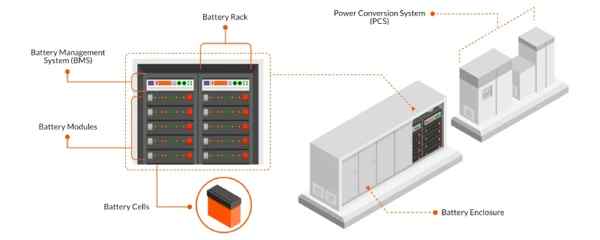
Sumergirse: Lifespan of the System Components
A BESS is a collection of high-quality components designed to work together:
- Módulos de batería: The LFP batteries are the longest-lasting part, thanks to their robust chemistry designed for thousands of cycles.
- Inversor (Pcs): This is the system’s workhorse. As a complex piece of power electronics that is constantly managing high power loads and dealing with heat, its components (like capacitors and fans) naturally age. A 10-15 year lifespan is a typical expectation for a high-quality hybrid inverter from a reputable brand. Many come with a 10-year warranty to match the battery.
- Other Components: The enclosure, alambrado, Se desconecta de seguridad, y otro hardware (the "Balance of System") are all designed to last for the entire life of the system, provided they are not damaged.
- Long-Term Planning: This means that over a 20-year period, you should plan for the initial investment and one potential inverter replacement around the 10-15 year mark. This is a normal part of the long-term ownership of a sophisticated energy system.
En Gycx Solar, we build our systems using only high-quality BESS components1 from leading manufacturers with strong warranties, and we are transparent with our customers about the expected lifespan of every part. This ensures you have a clear understanding of the long-term value2 and maintenance plan for your investment.
A bess batteries system is an intelligent, integrated solution that is key to modern energy management. Powered by safe and long-lasting LFP batteries, it’s a durable, low-maintenance asset that provides energy security and financial savings. By understanding its components and how it works, Puede hacer una inversión segura en su futuro energético.
If you’re ready to explore how a BESS can be tailored to your home or business in Singapore, Nuestro equipo de expertos en GYCX Solar está aquí para ayudar. Contáctenos para una consulta profesional hoy!
